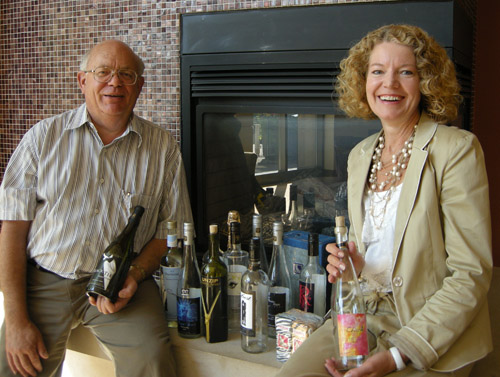
Marketing to millennials is different, says Prof. Statia Elliot, School of Hospitality and Tourism Management. “The younger generation has different preferences than those in the past, and if companies are going to reach this group, they need to market appropriately.” Elliot has two recent studies that vividly demonstrate these differences.
Her first example: wine. Students in Prof. Joe Barth’s third-year beverage management class agreed to take part in this study. One of Barth’s usual assignments requires the students to create packaging for an imaginary wine. Elliot and Barth analyzed these designs, and then had more than 400 other students complete a survey to determine how much packaging affected their choices of wines and what “personality” they were looking for.
“What surprised me was the sexual theme in so many of the wine labels created by the students,” Elliot says. “They created names for their wines such as One Night Stand, Secret Party, Unzipped, Lust and Forbidden, and used images on the labels that conveyed sexual messages.” Not all the labels had an explicitly sexual theme – other names chosen included Kiss, Black Tie, Purple Umbrella and Socialite – but even the less erotic ones used non-traditional colours and striking images.
Barth adds that the creativity and quality of the designs was quite impressive: “They are spectacular – really beautifully done.” After creating the label or package (a few students designed less traditional wine packages such as bag-in-a-box or Tetra Paks, but most used bottles), students were asked to purchase three additional bottles of wine of the same type as their imagined wine, and in the same price range. These were then used in the surveys, so students participating in that section of the study would choose the wine they’d be most likely to purchase and answer questions about their reasons. The student designs did well against the purchased bottles, being chosen first about 24 per cent of the time.
In the past, Elliot explains, wine labels were generally designed with subdued, neutral colours and the design emphasized the name of the vineyard. For the growing market of young wine-drinkers, though, this won’t work. “Older wine drinkers are reducing consumption,” says Barth, who is a co-author of the study. “Today’s young people are the potential future market, and the traditional packaging and labels just don’t appeal to them.” Instead, the researchers found that these under-24 wine drinkers wanted a “spirited, up-to-date” personality.
Example number two: cruises. Elliot’s second study, co-authored with Prof. Chris Choi, started with the statistic that the average age of someone taking a cruise vacation has dropped from 65 in the early 1970s to 46 in 2008. She extracted data from a large study of North American travel, and analyzed just the numbers related to cruising.
If you haven’t looked at a cruise ship in 20 years, be prepared for big changes, Elliot says. “Cruising has evolved from art auctions and fruit carving classes,” she says. “Now it includes rock wall climbing and casinos.”
Her study again found significant differences among the generations. Older cruisers said they were looking for isolation and solitude: relaxing on a beach chair on a quiet deck appealed to them. Generation X cruisers (ages 25 to 44) said they cruised to make connections with others and to stimulate their minds.
The millennial generation, however (ages 18 to 24, according to Elliot’s classifications), wanted “everything,” says Elliot. “They wanted some solitude, but they also wanted to relax, create memories, and enrich their lives. This is the generation that wants it all. But they were not as interested in connecting with others.”
She suggests that cruise lines will need to market differently to each group, emphasizing the opportunities for solitude to the more mature travelers and promoting a full itinerary of activities plus a pampering spa for younger adults.
Elliot acknowledges that some of the differences may be due to different life stages, but adds: “I do find that Generation X and the millenials are quite distinct. Retailers get this: go to the mall and you’ll see how the unique needs of these young adults are catered to. But I don’t think cruises have caught up yet, and I hope this study helps them to see what they need to do.”